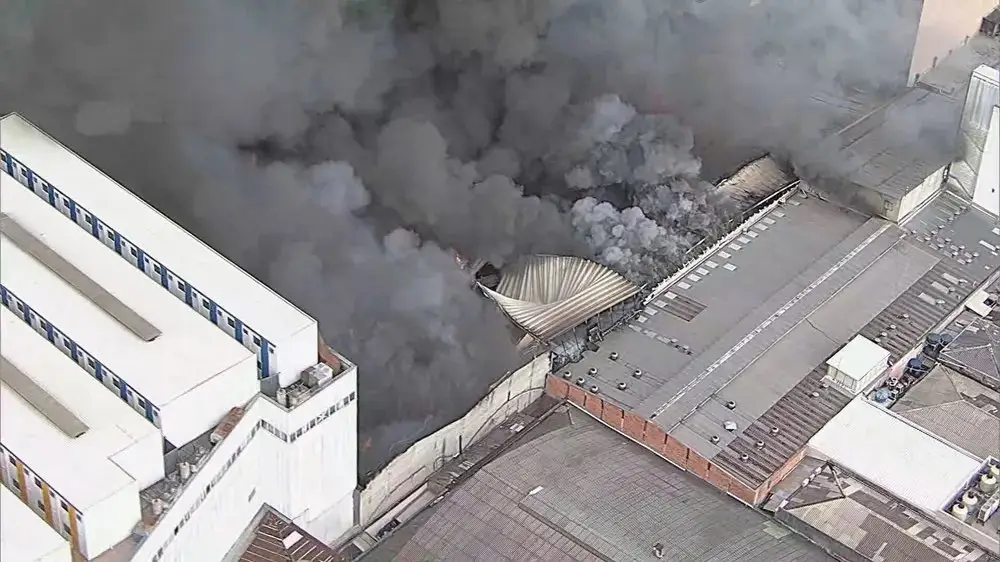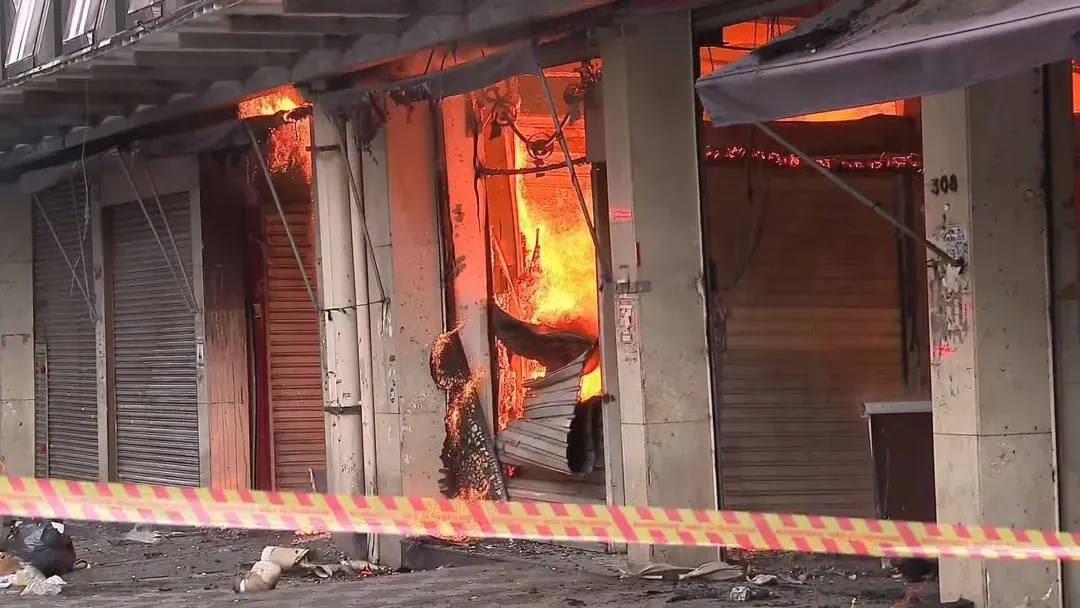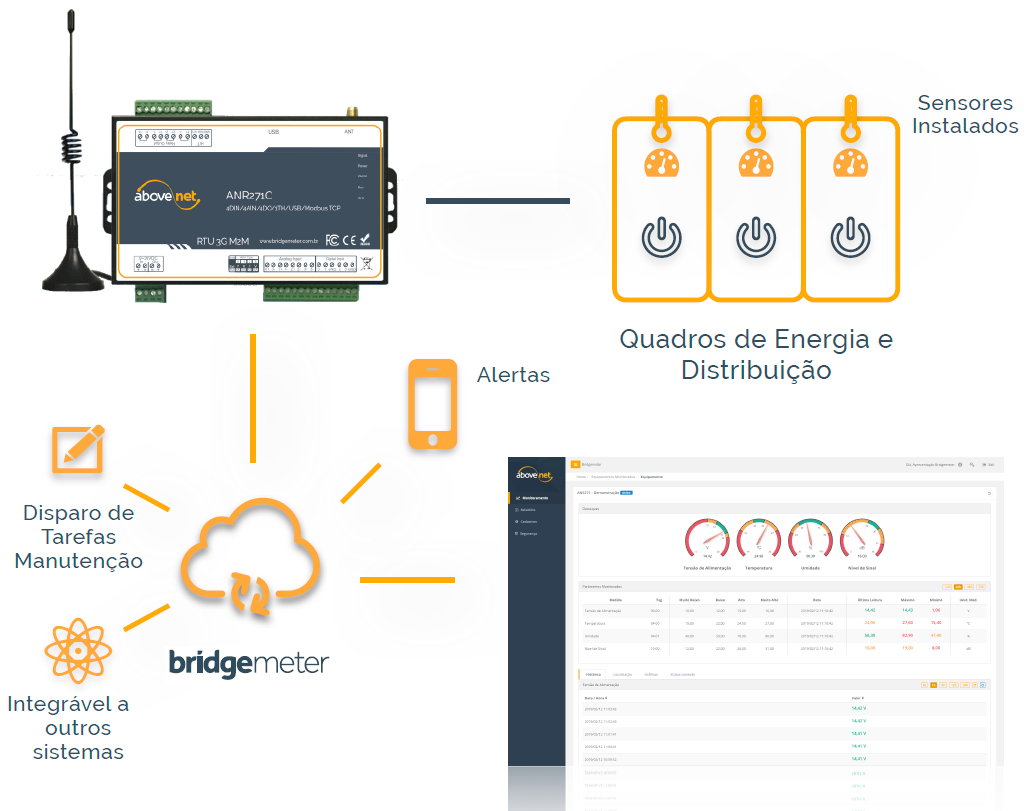The fire at Shopping 25 de Março exposed avoidable risks. Discover how smart predictive monitoring with IoT can prevent tragedies in shopping centers.
A mega fire hit Shopping 25 de Março, in Brás, downtown São Paulo, on Wednesday morning (30), leaving a trail of destruction and highlighting once again the urgent need to modernize fire prevention systems in shopping centers. The incident, which began around 6:40 am on the second floor of the building, consumed approximately 200 small stores in an area of 18 thousand square meters.
The flames spread quickly, requiring the mobilization of 29 vehicles and 76 firefighters to fight the fire, which was only controlled after six hours of intense work. Three people were hospitalized for smoke inhalation, and the mall's roof collapsed, causing incalculable losses to store owners and owners.

The Causes of the Fire: A Troubling Pattern of Negligence
Preliminary investigations point to a combination of factors that contributed to this tragedy. The main one is the lack of adequate documentation – the shopping center's Fire Department Inspection Report (AVCB) had expired since August. Furthermore, in 2022, engineers from the Property Use Control Department (Contru) had already found that the mall's automatic showers and fire door system were not working properly.
Reports from store owners indicate that the mall had lost power the afternoon before the incident, although Enel denied any record of a power outage at the location. This inconsistency in information suggests possible problems in the building's electrical infrastructure, one of the main risk factors for fires in commercial establishments, according to information from G1 .

How Smart Predictive Monitoring Could Have Avoided the Tragedy
Carlos Porto, Applications Manager at Above-Net and specialist in the management of fire prevention services, is emphatic when evaluating the incident: “As an expert, I can say that prevention through intelligent monitoring is the most effective way to protect lives and property . Predictive monitoring is not just a technology, but an urgent need for modern commercial security.”
Many accidents of much smaller proportions frequently occur in buildings and cause a lot of damage to property. The efficiency of the fire fighting system can prevent a tragedy, but it still causes a lot of damage, whether through fire, smoke, water fighting and even fire. loss of profit.
In fact, the incident at Shopping 25 de Março is a clear and extreme example of how traditional fire prevention systems, when not properly monitored, can fail at critical moments. Implementing a smart predictive monitoring system based on Industrial IoT could have identified and warned about several risk factors before they turned into a tragedy:
- Electrical Infrastructure Monitoring:
- Continuous detection of overloads and anomalies in the electrical network
- Identification of heating points in buses and ducts
- Real-time monitoring of energy consumption and demand
- Supervision of Fire Fighting Systems:
- Monitoring the pressure of lines and sprinklers
- Continuous check of reservoir levels
- Monitoring the operational status of fire pumps
- Environmental Control:
- Constant temperature measurement in critical areas
- Early smoke detection
- Real-time air quality analysis
Bridgemeter : The Ultimate Intelligent Fire Prevention Solution
Above Above-Net has been intensely dedicated to developing solutions that can prevent tragedies like this. Marcelo Ramos, CEO and Founder of the company, explains: “ Bridgemeter was developed precisely to prevent tragedies like this. Our Industrial IoT technology allows you to identify and alert about potential risks long before they turn into critical incidents. It’s not just about monitoring, it’s about predictive intelligence that saves lives.”
Bridgemeter represents a revolution in fire prevention in critical infrastructure. This Industrial IoT platform offers 24/7 continuous monitoring and real-time predictive analytics, enabling early identification of potential risks before they turn into tragedies.

Holistic View of Real-Time Operations
Bridgemeter is designed to integrate various sensors and equipment, allowing continuous monitoring of operating conditions. This includes detecting smoke, elevated temperature, and other indicators that may signal an imminent fire. With real-time alerts, the security team could have been proactively notified of any anomalies, enabling a quick response.
Predictive Analytics
Through advanced algorithms, Bridgemeter performs predictive analysis and identifies trends that precede failures or incidents. With this technology, it would be possible to predict risk situations before they become critical, allowing preventive interventions.
Interoperability
The Bridgemeter system allows integration with other platforms and devices already existing in the mall, such as alarm and access control systems. This interoperability would increase the effectiveness of monitoring and responding to emergencies.
In summary, the key features of Bridgemeter that could have prevented the incident include:
- Continuous Thermal Monitoring: Strategically positioned sensors monitor the temperature of power buses and environments, identifying overloads and anomalies before they reach critical levels.
- Predictive Analysis: Advanced algorithms analyze patterns and trends, identifying potential risks before they manifest.
- Proactive Real-Time Alerts: Instant notifications are sent to responsible teams when abnormal conditions are detected.
- Integrated Management: Single interface for monitoring multiple critical systems, including energy, firefighting and refrigeration.
- Digital Documentation: Management of plants, diagrams, installations, certifications, licenses and preventive maintenance.
Conclusion
The fire at Shopping 25 de Março serves as a stark warning about the need to modernize fire prevention systems in commercial establishments. Implementing smart predictive monitoring solutions, like Above-Net 's Bridgemeter , is not just a matter of compliance, but a vital necessity to protect lives and property.
In a scenario where the continuous increase in demand intensifies the risks of structural fires, with increasingly higher temperatures and increasingly overloaded electrical systems, the adoption of intelligent preventive technologies becomes imperative.
Bridgemeter represents not just a technological evolution, but a fundamental shift in the way we approach security in critical infrastructure, offering an additional layer of protection that could have prevented this and many other similar tragedies.

Application
Ensure energy efficiency and prevent fires with Monitoring of Electrical and Control Panels
The Electrical and Control Panel Monitoring catalog shows how Bridgemeter , Above-Net 's Industrial IoT solution for predictive analysis, allows intelligent remote monitoring of any size of electrical and control panels in real time.



